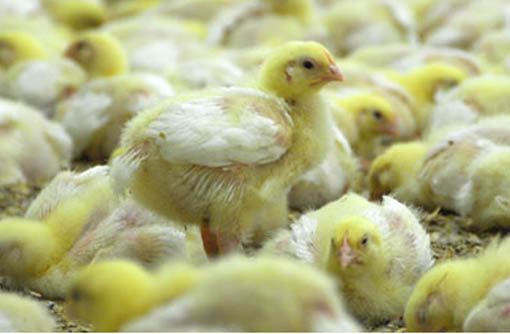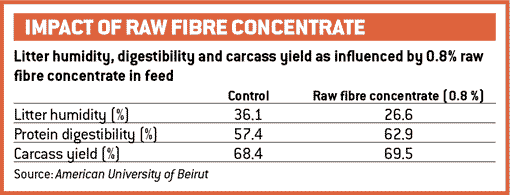Alternative approach to wet litter control

As modern poultry flocks are pushed to their performance limits, house management including ventilation, water supply and litter moisture are critical.
In Europe, until now, wet litter is mainly an issue in broiler houses, especially as the high energy costs during the winter housing period make it nearly impossible to provide sufficient ventilation. But as the conventional cage ban takes effect and more layers move to non-cage systems, litter quality could become an issue in the egg sector too.
Research and experience show that, if litter moisture is not kept at an acceptable level (between 25% and 35%), very high bacterial loads and unsanitary growing conditions may result, producing odors, insect problems, soiled feathers, foot pad lesions and breast blisters.
Feeding solutions
Feed additives, such as non-starch polysaccharide (NSP) enzymes or products based on minerals, have already been established on the feed market to address wet litter syndrome. But another approach could be the use of raw fibre concentrates as feed supplements in poultry feeds.
The term “raw fibre concentrate” describes fibre sources with a crude fibre content of at least 60%. Commercially they are based on lignocellulose.
In order to have an impact on faeces consistency, the product must have a high reversible water binding capacity and should be not fermented in the intestinal tract. Lignocellulose is an insoluble fibre source that fulfils both these requirements.
A further characteristic of insoluble fibres is that they accelerate the intestinal passage rate, which makes it hard for bacteria and their toxic metabolites to accumulate, with a positive effect on intestinal health and litter quality.
University trials
A recent trial at the American University of Beirut evaluated the effect of a commercially available raw fibre concentrate (Arbocel from JRS Nutrition in Germany) on litter quality and animal performance.
The experiment was conducted using 1,200 day-old male Ross 308 broiler chicks divided into six trial groups using 0.8 % raw fibre concentrate, and six control groups using 0.8 % wheat bran, with six replications per group.
At the end of the 38-day fattening period, the effect on humidity of the litter and bird performance was determined. As the table shows, moisture content of the litter fell by almost a third, while protein digestibility and carcass yield also improved.
“A major concern in poultry feeding is that the use of raw fibre concentrates, which deliver almost no energy, might have a negative impact on animal performance,” says Dr Manfred Pietsch of JRS Animal Nutrition. “However, these concerns are unnecessary. According to many on-farm and university level feeding trials, the use of raw fibre concentrates can even have a positive impact on performance.”
For example, Prof Dusel from the University of Applied Science, Bingen in Germany observed a significant improvement in FCR and daily weight gain following the use of a raw fibre concentrate in broiler feed.
And Monika Boguslawska from the University of Technology and Agriculture, Bydgoszcz in Poland observed a significantly increased activity of the proteolytic enzymes Trypsine and Chymotrypsine in broilers after the application of a raw fibre concentrate.
“Raw fibre concentrates could be a powerful tool to control wet litter syndrome,” says Dr Pietsch. “And, according to trials described in literature, raw fibre concentrates may even have positive impact on animal performance.”

